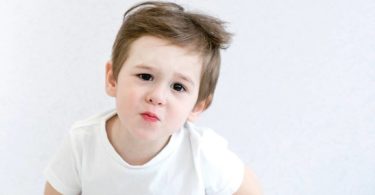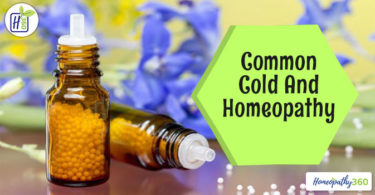Authors:
Dr. S.N.Sharma1, Dr. Laxman Verma2, Dr. Bhupendra Arya3
1 Assistant Professor, Department of Organon of Medicine and Homoeopathic Philosophy. Dr. M.P.K Homoeopathic Medical College Hospital & Research Centre, Jaipur. constituent college of Homoeopathy University.
2 PG scholar, Department of Organon of Medicine and Homoeopathic Philosophy. Dr. M.P.K Homoeopathic Medical College Hospital & Research Centre, Jaipur. constituent college of Homoeopathy University.
3 PG scholar, Department of Practice of Medicine. Dr. M.P.K Homoeopathic Medical College Hospital & Research Centre, Jaipur. constituent college of Homoeopathy University.
ABSTRACT:- It is very important that the homoeopathic physician is well versad with the emotional traits that are common to all children, in order to delineate the normal from the abnormal symptoms. A child’s first expression of basic emotion will relate to the physical or biological needs or goals, such as physical protection or survival. This article deals with an overview of Homoepathic approach in paediatrics patients.
Kew words:- Lessar known remady, Homoeopathy, Paediatrics, lesser known medicine for child.
INTRODUCTION:-
Developmental psychology explores the physical, behavioral, cognitive and personality changes that occur from conception through childhood and beyond, and it teaches us that there is a certain set of basic emotions that children express from infancy onwards. A child’s first expression of basic emotion will relate to the physical or biological needs or goals, such as physical protection or survival. As children get older they will express more complex emotions like sadness, anger, fear, etc.
These emotional reactions are often temporary, but if they are strong enough or last long enough they may form into emotional states and become moods.
These states can then start to influence the way children perceive and interact with the world. These emotions, when become a dominant characteristic of the personality of the child, will often form the most important source of symptoms that will point to the homoeopathic similimum.
It is very important that the homoeopathic physician is well versad with the emotional traits that are common to all children, in order to delineate the normal from the abnormal symptoms. Only then he can pick up the characteristic symptoms, which grant individuality to the patient, and will lead to a successful prescription.
Healthy mental functions in childhood are marked by the child’s everyday behavior, age-appropriate development, and a generally satisfied frame of mind. Mental satisfaction is illustrated by the way the child deals with feelings, thoughts and wishes generated by the way child deals with feelings, thoughts and wishes generated illustrated by the physical, psychological and social experiences which affect him. By studying developmental psychology and in practice by comparing many children, you will be able to distinguish more easily what is normal and what is abnormal behavior.
LESSAR KNOWN REMADY
(1) Aranea ixobala-
Identifying features:-
Mind:-
Extreme restlessness, with a desire to move about all the time.
Love to tease other children in class or sibling at home.
Witty and snappish
Absentminded children.
Deceitful.
Difficulty in trying to concentrate in their studies.
Impulsive and curious.
Oversensitive to the slightest noise, smell, or odor.
Rude and impolite.
Physical:-
Aversion to and aggravation from, fatty and rich food.
Cramps, tremors, and clinic spasms.
Over sensitiveness.
Overweight children.
Spasmodic contracture of the striated and non striated muscles.
Tonic convulsions with epilepsy
General:-
Chilly but better in open air.
Coffee tends to ameliorate.
Restlessness with a constant desire to be on move.
(2) Baryta phos.-
Identifying features:-
Mind:-
Cannot tolerate any bossy or contemptuous behavior, either towards themselves or their mentally or physically handicapped friends.
Dependent on their parents and teachers or guardians, as they need constant encouragement and support.
Feel unloved or uncared for by parents or by his guardians.
Inability to concentrate when reading or studing.
Sensitive to how people treat each other in society.
Physical:-
Very chilly, worse from slightest exposure to cold.
General:-
Chilly, cold in any from aggravates.
Arrested development.
Childhood leukemia.
Dwarfishness.
Glandular swellings.
Obesity.
Right- sided affections.
(3) Baryta sulph.-
Identifying features:-
Mind:-
Cowardice.
Dependent on others.
Easily embarrassed from slightest emotional conflict especially with friends and family.
Gets frightened easily.
Submissive by nature.
They think that they look ridiculous and so feel laughed at or mocked by others.
Timidity about appearing in public.
Physical:-
Hot head with cold extremities.
Indurations or suppuration of glands in the neck.
Worse from cold, but better in open air.
General:-
Desire for, and better in open air.
Adenitis.
Arrested development.
Cold wet weather aggravates.
Dwarfishness.
Glandular affections cancer, swelling, inflammation etc.
Lassitude with a desire to lie down all the time.
Tendency to take cold easily.
Wounds tend to heal slowly.
(4) Chlorpomazinum-
Identifying features:-
Mind:-
Schizoid personality.
Spells of absentmindedness and poor concentration.
Very poor academic performance.
General:-
Tendency to be on the obese side.
Aplastic anemia.
Chronic epilepsy.
Family history of diabetes mellitus, hypertension, or tuberculosis.
Lack of vital heat.
Resistance to anti-epileptic treatment.
Tendency to cold easily.
Thrombocytopenia.
(5) Lac. Humanum-
Identifying features:-
Mind:-
Children who are sexually abused and who often dream of death, dirty water, frightful guilt, being pursued etc.
Extremely in secure children, due to conflicts in the family, or among the parents, the insecurity is indirectly expressed in the form of dreams, for examples, danger, death, falling, murder, quarrels, war, wild animals etc.
Feels for shaken, lonely, neglected and estranged from friends and family.
Spaced-out feeling, dream- like state and awkwardness, resulting from neglect by the family.
The child’s emotions are suppressed by an authority figure, for example, parents, teachers, friends, etc. this may be indirectly expressed in the form of dreams with images of lions, or dreams of fighting for their right, or felling some place.
Physical:-
Awkwardness of hands, keep dropping things.
Chronic diarrhea due to malabsorption syndrome, related to celiac disease, has forceful, sudden urging in the morning.
Either very energetic or has no energy at all.
General:-
Either very energetic or has no energy at all.
A good remedy for mucoviscidosis, lactose intolerance, mamabsorption syndrome and rickets.
Chilly children.
General sensitiveness, with aggravation from the slightest touch.
(6) Lac. Leoninum-
Identifying features:-
Mind:-
Angry, and abusive child whose ego tends to get hurt very easily.
Has leadership qualities
Children who are born from a mother who was treated unjustly and shabbily or had to suppress her anger during pregnancy.
Dictatorial children who come from a family where they are the only child or the first born.
Wants to be the best in every things.
Physical:-
Hot patient requires the fan or an air conditioner all the time.
Throat sensitive to clothing.
General:-
Better by being fanned, in open air, or when at the seaside.
Hunger aggravates.
Sore, bruised pain on waking in the morning.
Usually worse in the morning and better by evening.
Warmth aggravates.
Weakness and sluggishness of the body.
(7) Mygale lasiodora-
Identifying features:-
Mind:-
Fidgetiness, especially of the hands.
Likes fast, loud and rhythmic music.
Restless children who talk and act quickly.
Physical:-
Restlessness constant motion, especially of the hands and feet.
Sensitive to noise, touch, and vibration.
Better by afternoon sleep.
Chilly and extremely hairy children.
Predominantly a right-sided remedy.
Tendency to lymphangitis.
General:-
Constant motion of the whole body.
Unsteady gait.
Chilly.
Emaciation of the body in chronic affections.
Inability to walk or stand properly.
Periodicity of complaints.
Predominantly a right sided remedy.
Red streaks along the lymphatic channels.
Twitching and convulsive jerking of muscles.
(8) Borax veneta-
Identifying features:-
Mind:-
Fidgety and fickle.
Infant screams and grasps the dram or cradle suddenly without any apparent cause.
Nervous excitability and oversensitivity like any of the natrium’s.
New borns are extremely frightened on hearing any sharp sound like coughing, sneezing, another child crying, fire crackers, someone hawking, a dress or keychain rusting, a door slamming.
The child cries and clings to the mother when rocked or swung or when made to sit on a rocking chair or horseback, or when carried downstairs, or when made to sit in the amusement park rides that go up and down rapidly.
The intent weeps violently at regular interval but here the characteristic is that the weeping ceases within a few minutes, and the infant is cheerful and playful once again.
Anxious, restless, nervous and excitable.
Deep fright from sudden loud noise.
Great anxiety in neonates and infants when laying them down on a bed or in the pram.
Loathing of the breast.
Nervous excitability, shrieking, and crying usually lasts until 11pm. After that when the child feels sleep, the complaints slowly disappear.
Physical:-
Adhering, together at the tips (plica polonica) the hair can never be combed smoothly.
Aphthous stomatitis in infants and new bourns. In older children, eating salty or sour food regularly induces stomatitis.
Dread of downwards motion in nearly all complaints.
Hair becomes tangled and frowsy very easily, sticks together.
Red shiny noses of young boy and girls, with crusty nostrils.
Screams and shrieks before urination.
All the nerves are in a fret.
Child refuses breast feeding altogether due to severe apathy.
Clear, thick, hot, acrid discharges from all orifices.
Dirty complexion.
Infants who are cyanotic from birth due to improper oxygenation.
Itching, redness, and irritation in the vulva and lower part of the vagina in little girls.
Malnourished, emaciated, soft, and flabby children.
Shriveled skin or mucous membrane.
Unhealthy skin suppurates easily.
General:-
Downward motion aggravations.
Allergic constitution.
Anemic children.
Change of weather aggravates.
Emaciation in children with a tendency to diarrhea.
Perspiration during and after a feeding.
Right-sided complaints.
Summer complaints of infants.
Trembling from the slightest exertion fear, or with fever.
(9) Natrium silicicum-
Identifying features:-
Mind:-
Children who are very sympathetic towards and have a deep affection for animals.
Child hides emotions, and hence appears very calm and silent from the outside.
Children who are forsaken, neglected, and estranged from the family.
Physical:-
Aliments from vaccination.
Aversion to and worse from cold and open air, better after a hot bath.
Lean, thin, rapidly emaciating children, with delicate constitutions.
General:-
Desire for physical exertion, which amelioration, but mental exertion of any kind aggravates.
Has an oily perspiration with a sour or offensive odor, especially at night or from the least exertion.
Indurations of glands.
Lack of vital heat worse from cold and open air, better by a hot bath.
Recurrent absesses, useful to hasten suppuration, of stubborn abscesses.
Sluggish and lethargic, with a constant desire to lie down during the day.
Tendency to catch cold easily.
Worse from the approach of thunderstorms and during the full moon.
(10) Tuberculinum bovinum kent-
Identifying features:-
Mind:-
Abusive, angry, and rude children who tend to insult their parents and throw things at people in anger.
Dissatisfied and defiant child, with a malicious disposition, especially when his demands are not fulfilled by his parents or authority.
Energetic children who will not sit in one place. Always want to be accuoied in some activity, as soon as one activity is over they are ready for another.
Physical:-
Emaciation with weakness and ravenous appetite.
Allergic constitution, allergic to furs, cats.
Strong cravings for open air like to sit near a window in the car, or train for access to direct draft of air.
General:-
Allergic constitution, is especially allergic to fur and cats.
Emaciation with weakness and a ravenous appetite.
Strong craving for open air wants to sit near a window in the car, bus, or train to have direct draft of air.
Delayed convalescence from any infectious diseases, such as chickenpox, influenza, measles, mumps, and typhoid.
Never well after vaccinations or antibiotics.
Often usedwhen well selected remedies fail and there is a trace of tubercular miasm, when many symptoms arepresent, when the picture isunclear, or when the symptoms change very frequently.
Profuse perspiration during sleep, after midnight especially over the cervical region, with profound weakness.
Recurrent abscesses.
Tendency to suppuration of bones and glands.
Reference :
1. Farokh j. master , clinical observations of children remedies.1sted. New Delhi : B.jain publisher(P) Ltd;2010
2. Boericke William. New Manual Of Homoeopathic Materia Medica, New Delhi: B. Jain Publishers(P) Ltd; 2011
3. Allen HC. Allen‘s Keynotes Rearranged and Classified Leading Remedies of the Materia Medica and Bowel Nosodes. New Delhi: B. Jain Publishers(P)Ltd; 2005.





